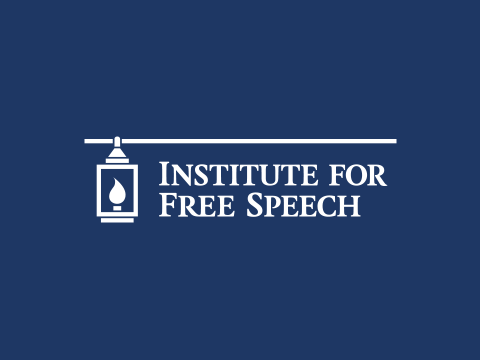Justice Elena Kagan’s dissent in Arizona Free Enterprise Club (AKA McComish) yesterday is being praised by the so-called campaign finance ‘reform’ community today. The New York Times, for example, writes:
Justice Elena Kagan, writing in dissent, dissects the court’s willful misunderstanding of the result. Rather than a restriction on speech, she says, the trigger mechanism is a subsidy with the opposite effect: “It subsidizes and produces more political speech.” Those challenging the law, she wrote, demanded – and have now won – the right to “quash others’ speech” so they could have “the field to themselves.” She explained that the matching funds program – unlike a lump sum grant to candidates – sensibly adjusted the amount disbursed so that it was neither too little money to attract candidates nor too large a drain on public coffers.
There are a lot of things wrong with Justice Kagan’s dissent, but that’s the subject of a later post. For now, I just want to focus on one of the more interesting things she wrote, which might give ‘reformers’ pause before celebrating this dissent any further.
Justice Kagan opens her dissent with two hypothetical states combating corruption. The first adopts almost all the favorites of the ‘reform’ community – contribution limits, disclosure, and tax funding of political campaigns, although the program doesn’t offer matching funds similar to those struck down yesterday. The second state does likewise – except that their program for tax funding of campaigns does include matching funds.
So what does Justice Kagan, in her hypothetical, expect to be the outcome in the first state?
But these measures do not work. Individuals who “bundle” campaign contributions become indispensable to candidates in need of money. Simple disclosure fails to prevent shady dealing. And candidates choose not to participate in the public financing system because the sums provided do not make them competitive with their privately financed opponents. So the State remains afflicted with corruption.
The second state, of course, does much better in the hypothetical:
Voters of the second State, having witnessed this failure, take an ever-so-slightly different tack to cleaning up their political system. They too enact contribution limits and disclosure requirements. But they believe that the greatest hope of eliminating corruption lies in creating an effective public financing program… So the voters enact a program that carefully adjusts the money given to would-be officeholders, through the use of a matching funds mechanism, in order to provide this assurance… And just as the voters had hoped, the program accomplishes its mission of restoring integrity to the political system. The second State rids itself of corruption.
She then sums up what she believes the policy choices, and their expected outcomes, to be:
A person familiar with our country’s core values-our devotion to democratic self-governance, as well as to “uninhibited, robust, and wide-open” debate… might expect this Court to celebrate, or at least not to interfere with, the second State’s success. But today, the majority holds that the second State’s system-the system that produces honest government, working on behalf of all the people-clashes with our Constitution. The First Amendment, the majority insists, requires us all to rely on the measures employed in the first State, even when they have failed to break the stranglehold of special interests on elected officials.
Is it just me, or is Justice Kagan acknowledging that contribution limits and disclosure are not effective in combating corruption? It certainly reads that way to me. Granted it’s within the scope of a hypothetical, but it’s hard to imagine that hypothetical wasn’t influenced by her own thoughts, or at least those of her dissenting colleagues, on the subject of campaign finance regulation.
The reason contribution limits have been judged constitutional by the Supreme Court in the past, most notably in Buckley, is that even though limits impose a burden on the First Amendment, that burden is acceptable in light of the government’s compelling interest in combating corruption and its appearance. It seems to me that if Justice Kagan is doubting the effectiveness of contribution limits to battle corruption, it should at least raise the question of why we bother having contribution limits?
After all, if it’s a burden on the First Amendment (and I think every Supreme Court Justice over the last 35 years with a single exception has acknowledged it is) and there is a recognition that this burden does not effectively address the compelling interest asserted by government, then why should the Supreme Court sign off on such a burden?
The same goes for disclosure, although there the Supreme Court has identified other interests besides combating corruption, making Justice Kagan’s dismissal of disclosure as a tool to fight corruption less devastating.
Justice Kagan’s dissent is disappointing in many regards. But in one very key area, addressing the shortcomings and failure of contribution limits and disclosure to effectively limit corruption, she nailed it.












